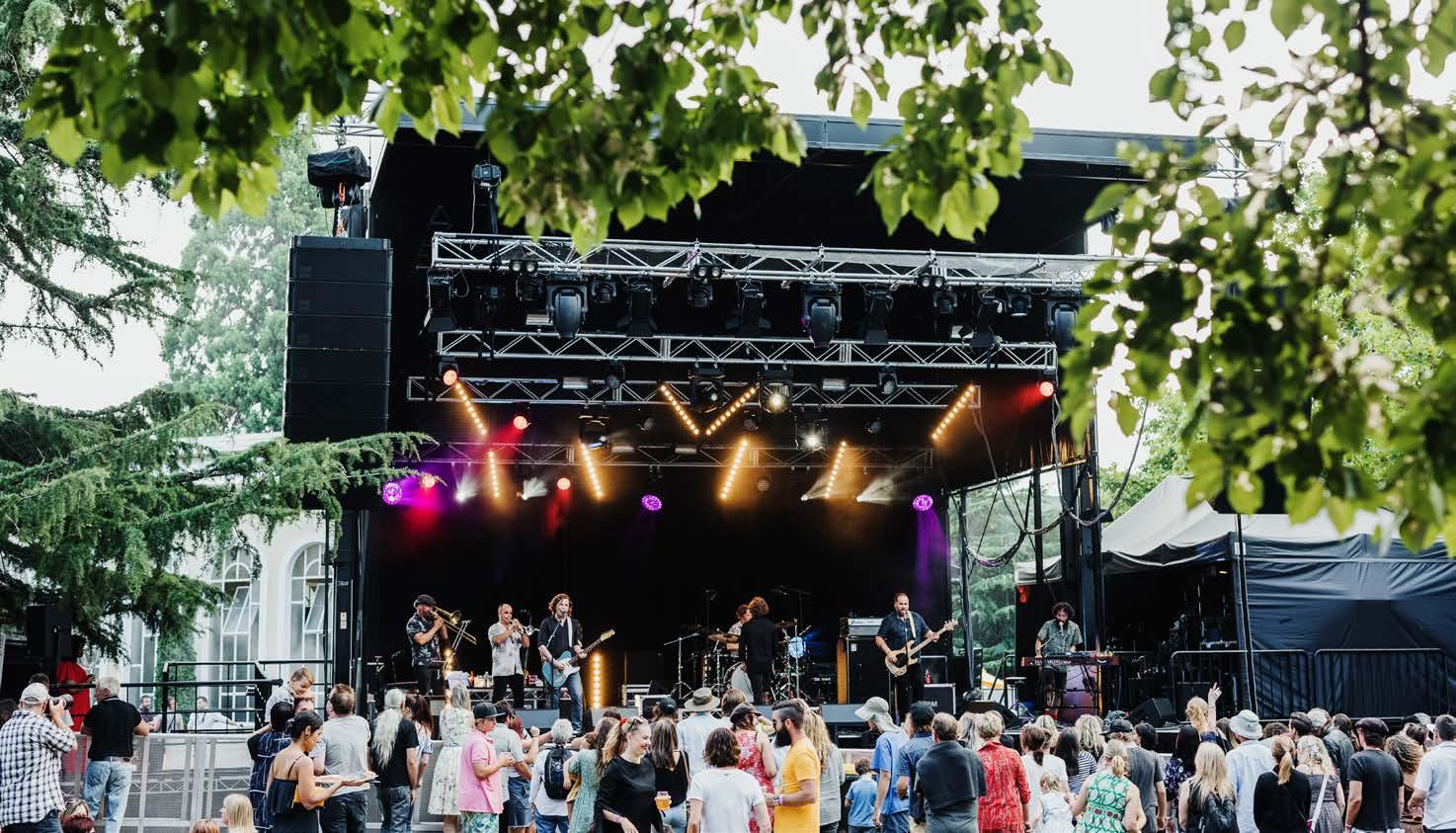
5 minute read
Policy Watch - Recovery & Reopening Priorities
POLICY WATCH: RECOVERY & REOPENING PRIORITIES FROM TICT CEO LUKE MARTIN
Since the shut-down first began in March, the TICT Board has been talking about our industry priorities for the recovery and rebuild of our visitor economy.
Advertisement
We’ve been very clear with the State and Federal Government about what must be done to secure businesses through the shut-down, but also some practical ideas to kick-start visitor demand when the time is right, and ultimately lay the foundations for our next era of tourism growth. Some of these ideas are likely to feature in the ‘T30’ – Rebuild Plan we’re working on with the Tasmanian Government.
TAKE YOUR CAR ON BASS STRAIT FOR FREE
The big-ticket item that has already got a lot of media attention, particularly in the north-west, is our proposal for the Bass Strait Passenger Vehicle Equalisation Scheme (BSPVES) to be increased, at least temporarily, to make the cost of taking your vehicle across Bass Strait $0. The BSPVES is the unsung hero of the Tasmanian tourism industry. Introduced by John Howard in 1996, with the expressed intent of making the cost of taking your vehicle across Bass Strait roughly the equivalent to the cost of driving the same distance on the national highway network, the BSPVES has underpinned the success of the Spirit of Tasmania service for 25-years. We’ve been very clear with the State and Federal Government about what must be done to secure businesses through the shutdown, but also some practical ideas to kick-start visitor demand when the time is right, and ultimately lay the foundations for our next era of tourism growth.
Visitors to Tasmania who arrive by sea stay longer, spend more, and disperse further through regional Tasmania. They are the lifeblood of our most remote destinations like Stanley, Strahan and down the Far South. The BSPVES is beautiful in its simplicity. The Australian Government simply makes a payment to TT Line for every vehicle the Spirit of Tasmania carries across Bass Strait. This reduces the cost to travellers for the vehicle component of their passage. Unfortunately, for whatever reason, the BSPVES was not indexed by the Australian Government from 1996 to 2008, meaning it has lost some of its relative value over the years. There is now a ‘gap’ of about $110 for a standard vehicle eachway that passengers pay as part of their fare. We know it is going to take time for air services to return to pre-COVID levels, particularly in regional Tasmania. But we have our two Spirits ready to go now. All the research is indicating many Australians are likely to want to travel with their own car over coming months. The driving holiday is in-vogue. Increasing the BSPVES – and once again making it free to bring your car to Tasmania – makes perfect sense.
EVENTS, EVENTS, EVERYWHERE.
The other no-brainer is investing in an events-led recovery. When we think events and tourism, what often comes to mind is AFL Football, the Taste, Dark MOFO, and our other iconic events with lots of patrons. These events have never been more valuable, and we must support our major event organisers over coming months as they adapt to social distancing measures and the new norm. It takes time, money and vision, to create a major event, especially in these circumstances. We really need to protect and sustain the major events we have to ensure they can come back in 2021, before pursuing new major events. But in the meantime, we have right now an almost endless market of community and sporting organisations across Australia, who have all had their 2020 national get-togethers and championships disrupted by COVID and are looking to reschedule for 2021. They are price sensitive and are likely to be looking for a cost effective, simple and low-risk option. Tasmania should be that option. Launceston has proven itself in this space with its growing events calendar over the past couple of years, but every part of the State has seen the value of participatory events in bringing visitors to their region. Over the next few months, we will not sell ourselves out, but continue to be clever, strategic, optimistic, and ambitious in realising Tasmania’s destiny as one of the world’s truly unique visitor destinations.
Image credit: Adam Gibson

Going hard now and incentivising organisations, including financially, to schedule their 2021 championships and national get-togethers in Tassie is simple tourism ‘money ball’. We do not have to invest a lot to get a quick outcome with a direct and often substantial economic return.
NOT SELLING THE FARM
Over the next couple of years, we will pursue ideas like these to restore our visitor economy, rebuild tourism demand and business confidence. The Tasmanian economy will need tourism to again do the heavy lifting, creating jobs and investment across the State, as we recover from COVID. But in prioritising visitor growth to kick-start our tourism industry, we must not lose sight of what we stand for as an industry. Our values, and the aspirations we share for our industry and our State. Through the back half of last year, you shared with us your vision for Tasmanian tourism as part of the consultations across Tasmania in shaping the new ‘T30’ Tasmanian Visitor Economy Strategy. You shared with us a vision of tourism for Tasmania’s sake - a destination focussed on yield-over-volume, with a true commitment to sustainability and quality in everything we do. A visitor destination where the locals still embrace tourism and welcome our visitors. Where, in turn, we as an industry skill-up local kids with the opportunity for meaningful careers, here, at home. All the research is indicating many Australians are likely to want to travel with their own car over coming months. The driving holiday is in-vogue, increasing the BSPVES – and once again making it free to bring your car to Tasmania, makes perfect sense.
Image credit: Jarrad Seng

Where we show true global leadership in climate change, waste management, and environmentally responsible tourism. That we be a tourism industry that fosters opportunity for Tasmania’s Aboriginal people to share their culture with visitors from across the globe. Creating economic opportunity for their communities while enhancing the truth and depth of the Tasmanian visitor experience. Despite the COVID Black Swan, this vision still bares true, and must guide our rebuild and recovery. Over the next few months, we will not sell ourselves out, but continue to be clever, strategic, optimistic, and ambitious in realising Tasmania’s destiny as one of the world’s truly unique visitor destinations.






